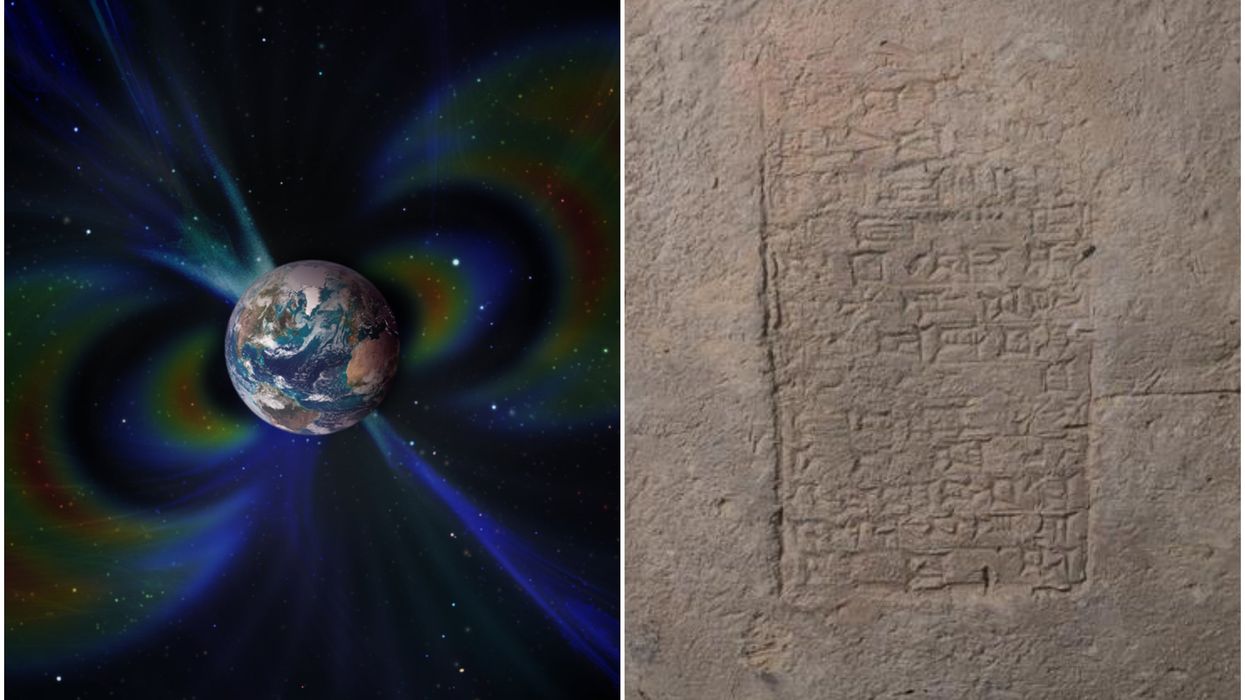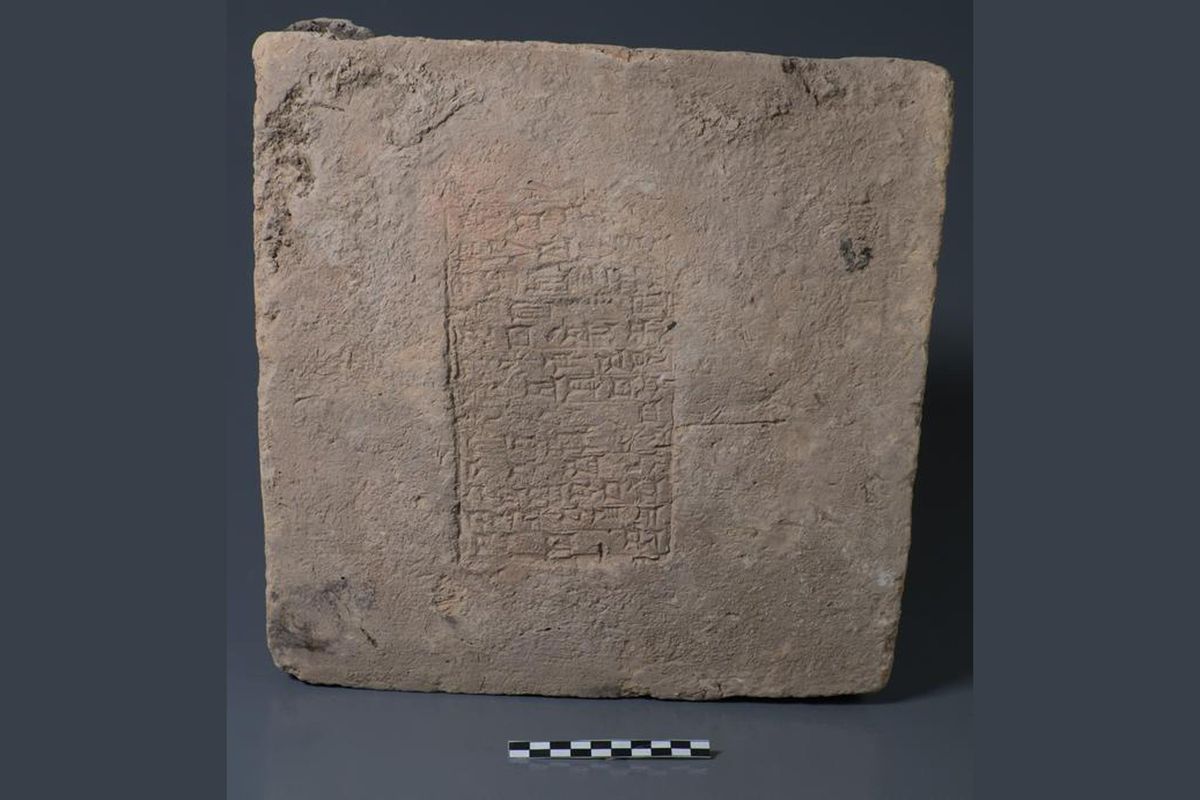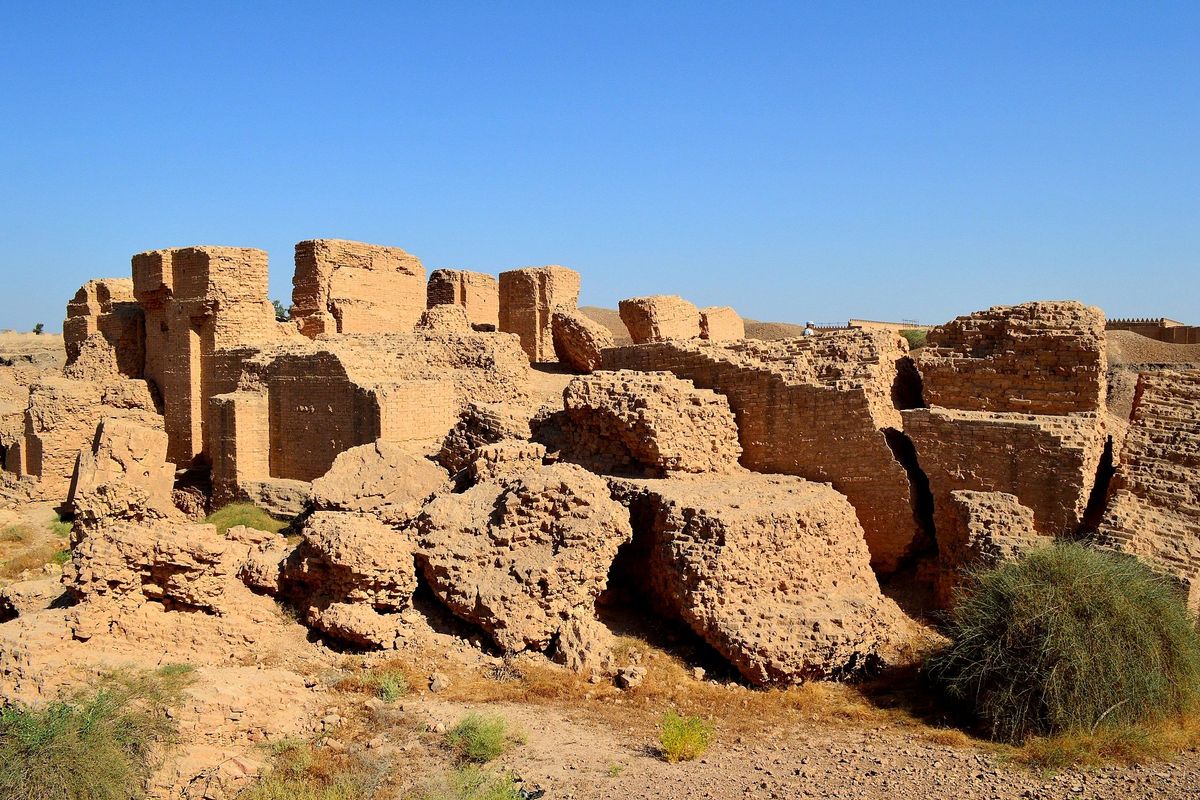Science & Tech
Harriet Brewis
Dec 19, 2023

Right: Bricks dating back to the reign of Nebuchadnezzar II (ca. 604 to 562 BCE) shed new light on the behaviour of Earths magnetic field
(iStock/Slemani Museum)
There’s much more to the humble brick than meets the eye. That is, at least, if it was made by the Mesopotamians.
The iconic peoples, who occupied a region which is now Iraq, eastern Syria and southeastern Turkey, are largely credited as the architects of human civilisation.
Their history is marked by world-changing inventions, including written language, maths and the concept of time.
Now, you might think that, compared to all those things, a stone slab is a bit of a non-event.
However, by studying bricks crafted by the burgeoning society some 3,000 years ago, scientists have made a groundbreaking discovery, both about the workings of our planet and how we measure the past.
An international team of researchers analysed 32 clay Mesopotamian bricks, each inscribed with the name of the king who was on the throne when it was made.
They found that iron oxide grains within the clay still retained the direction and strength of the Earth’s magnetic field at the time that they were fired.
This not only enabled the scientists to determine the precise age of the bricks, but it also offered the scientific community an insight into how the world’s magnetic field has changed over time.
This, in turn, could help experts better understand the field’s current behaviour and predict how it will fluctuate in future.

"The geomagnetic field is one of the most enigmatic phenomena in earth sciences," geophysicist Lisa Tauxe, who worked on the study and co-authored a paper on their findings, said in a news release.
She noted that the remains of the Mesopotamian cultures, especially the bricks stamped with the names of their rulers, “provide an unprecedented opportunity to study changes in the field strength [...], tracking changes that occurred over several decades or even less."
The reason why this magnetic field is so mysterious is that it is subject to the machinations of the geodynamo deep within the Earth’s core and to external forces, like solar wind.
As a result, its strength is inconsistent, meaning temporary pockets of unexplained strength occasionally pop up, as do patches of unwelcome weakness.
Given that the field protects us from cosmic radiation and is the basis of our navigation systems, it would be helpful to have a better idea of how it evolves and wavers.
Thankfully, we can pick up clues about its past by looking at imprints left on the planet’s surface.
For example, magnetic grains present in molten magma align with the planet’s magnetic field, setting in this position as the magma hardens into volcanic rock. These rocks then essentially serve as a record of the magnetic field at the time, as Science Alert notes.

Tauxe and her colleagues applied a similar science to the Mesopotamian bricks – studying how the Earth’s magnetic field was preserved in these human-made objects (a field of study known as archaeomagnetism).
To do this, the researchers chipped a tiny fragment off of each of the 32 bricks and used a magnetometer to measure the grains of iron oxide contained within.
This enabled them to broadly track how the magnetic field shifted over a period of around 2000 years – from the 3rd to the 1st millennium BCE.
They then compared their results to other archaeomagnetic reconstructions of the field from around the world.
These fellow reconstructions suggest that a strange spike in the strength of the magnetic field – an event which has been dubbed the Levantine Iron Age geomagnetic Anomaly (LIAA) – occurred over modern-day Iraq between 1050 and 550 BCE.
Tauxe and her team’s findings also confirmed that the LIAA had taken place, revealing that the field was almost twice as strong in the area as it had been a thousand years before, according to IFLScience.
In addition, the tests showed brief but dramatic fluctuations in field strength had taken place between roughly 604 and 562 BCE.
This proves that the planet’s magnetic field can undergo rapid spikes, which is an alarming but useful realisation.

The other bonus of their work is its implications on how we chronolgise events in the ancient world.
By matching the stamped bricks to the magnetic field variations, the team have provided historians with a more accurate idea of when different kings ruled Mesopotamia.
This is especially handy because, although the order of succession had already been established, the dates on which each ruler ascended the throne had been less clear thanks to incomplete historical records, Science Alert reports.
“We often depend on dating methods such as radiocarbon dates to get a sense of chronology in ancient Mesopotamia,” Mark Altaweel, University College London, who co-authored the brick paper explained.
“However, some of the most common cultural remains, such as bricks and ceramics, cannot typically be easily dated because they don’t contain organic material.
“This work now helps create an important dating baseline that allows others to benefit from absolute dating using archaeomagnetism."
His colleague, lead author Professor Matthew Howland of Wichita State University, reinforced the point, adding: “By comparing ancient artefacts to what we know about ancient conditions of the magnetic field, we can estimate the dates of any artifacts that were heated up in ancient times.”
Sign up for our free Indy100 weekly newsletter
Have your say in our news democracy. Click the upvote icon at the top of the page to help raise this article through the indy100 rankings
Top 100
The Conversation (0)













